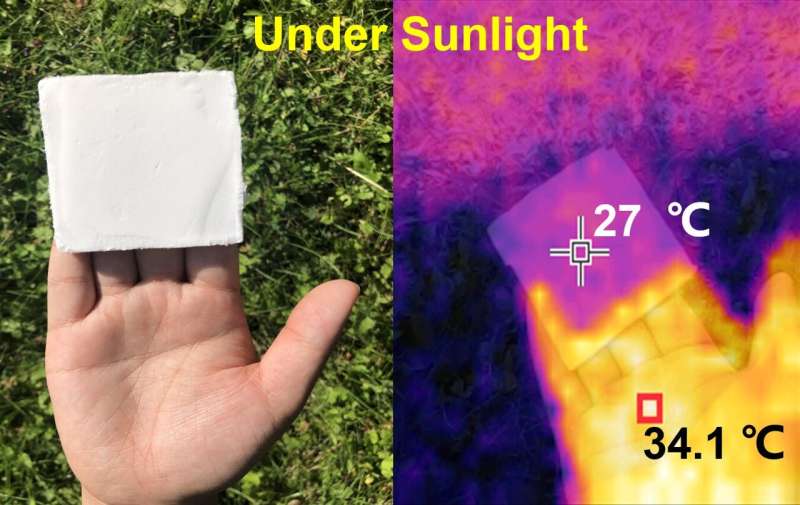Summertime is almost here, a time when many people try to beat the heat. But running air conditioners constantly can be expensive and wasteful. Now, researchers reporting in the ACS journal Nano Letters have designed a lightweight foam made from wood-based cellulose nanocrystals that reflects sunlight, emits absorbed heat and is thermally insulating. They suggest that the material could reduce buildings’ cooling energy needs by more than a third.
Although scientists have developed cooling materials, they have disadvantages. Some materials that passively release absorbed heat let a lot of heat through to buildings under the direct, midday sun of the summer months. And other materials that reflect sunlight don’t work well in hot, humid or cloudy weather. So, Yu Fu, Kai Zhang and colleagues wanted to develop a robust material that could reflect sunlight, passively release heat and keep wayward heat from passing through.
To generate a cooling material, the researchers connected cellulose nanocrystals together with a silane bridge, before freezing and freeze-drying the material under a vacuum. This process vertically aligned the nanocrystals, making a white, lightweight foam, which reflected 96% of visible light and emitted 92% of absorbed infrared radiation.
When placed over an aluminum foil-lined box sitting outdoors at noon, the material kept the temperature inside the box 16 degrees F cooler than the temperature outside it. Also, the material kept the inside of the box 13 degrees F cooler when the air was humid. As the cellulose-based foam was compressed, its cooling ability decreased, revealing tunable cooling properties.
The team calculated that placing the foam on the roof and exterior walls of a building could reduce its cooling energy needs by an average of 35.4%. Because the wood-based cellulose foam’s performance can be tuned depending on weather conditions, the researcher say that the technology could be applied in a wide range of environments.
You may like to read:
Novel Method for Developing Dimension-Controlled Carbon Nanostructures
This software differentiates authentic images from deepfakes












